No products in the cart.
Some trees are meant to add beauty to the garden by providing not only shade but pretty flowers. Mimosa tree is a common example of a flowering tree that displays extravagant pink pompom-like blooms during the summer season.
Such blooms offer a sanctuary of sweet nectar to pollinators like hummingbirds, bees, and butterflies. Because of the attractiveness of its flowers, the mimosa tree is quite popular in the ornamental tree category. However, there’s a catch. Mimosa trees can be a nuisance in open areas and forests because it’s a strong competitor to other established trees.
You have to think more than twice before growing a mimosa.
More About Albizia julibrissin Mimosa Tree
Mimosa tree (Albizia julibrissin) is a well-known member of landscape trees coming from the Fabaceae family. It’s native to tropical Asia, particularly in countries of Iran, India, China, and Japan. Its mature size ranges from small to medium (20 to 40 feet tall), but it can also be grown as a shrub in a pot. It has an average life span of 30 years.
This tree is known to be fast-growing. A young mimosa tree can add a height of 2 or more feet per year! In other areas, Mimosa trees are considered invasive because they easily outgrow the other trees in the same place.
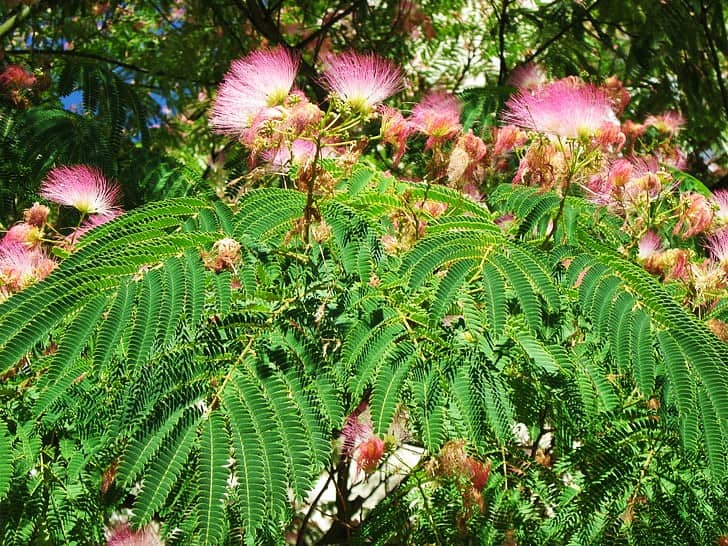
Another name used to refer to the Mimosa tree is the silk tree. The reason for this is that the fuzzy flower balls are made up of silky pink threads. Those flowers are also fragrant, making them more desirable for pollinating insects.
Flowering begins in May and lasts until July.
The leaves of Mimosa trees resemble that of a fern which is feathery in appearance. It responds to certain environmental stimuli like touching, raindrops, and even nighttime. This phenomenon is described as a nastic movement, which is pretty common in legume plants indoors like silk trees.
Its tree trunk can either be single or multi-stem. On the upper part of the trunk, the branches grow horizontally, giving you that umbrella-like appearance. The bark is smooth and brown in color when mature.
While Mimosa trees may look sturdy on the outside, they’re weak and brittle on the inside. Come strong winds, and branch breakage will easily occur.
Nevertheless, the ornamental value of the Mimosa tree is intact. You can plant this tree to serve as a focal point in your landscape or as a permanent border in your fences.
Mimosa Tree Care Guide
Caring for a Mimosa tree per se is relatively easy. However, because of its invasive tendency, maintaining this tree to prevent uncontrolled spread requires hard work. Before you decide growing mimosa, make sure to check first whether it’s listed as invasive in the area where you live.
Otherwise, you might get in trouble with the authorities. Now, here are the important details on how to grow and care for mimosa trees.
Soil
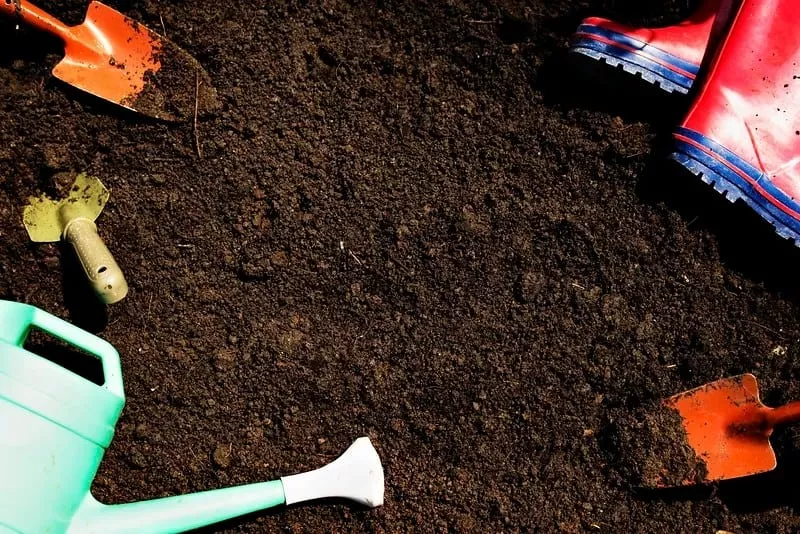
Mimosa trees thrive in well-drained soil. The best soil type is a loamy mix, but they’ve also proven to grow successfully in other soil conditions. An acidic soil pH (4.6 to 5) also ensures the healthy growth of the Persian silk tree.
Light
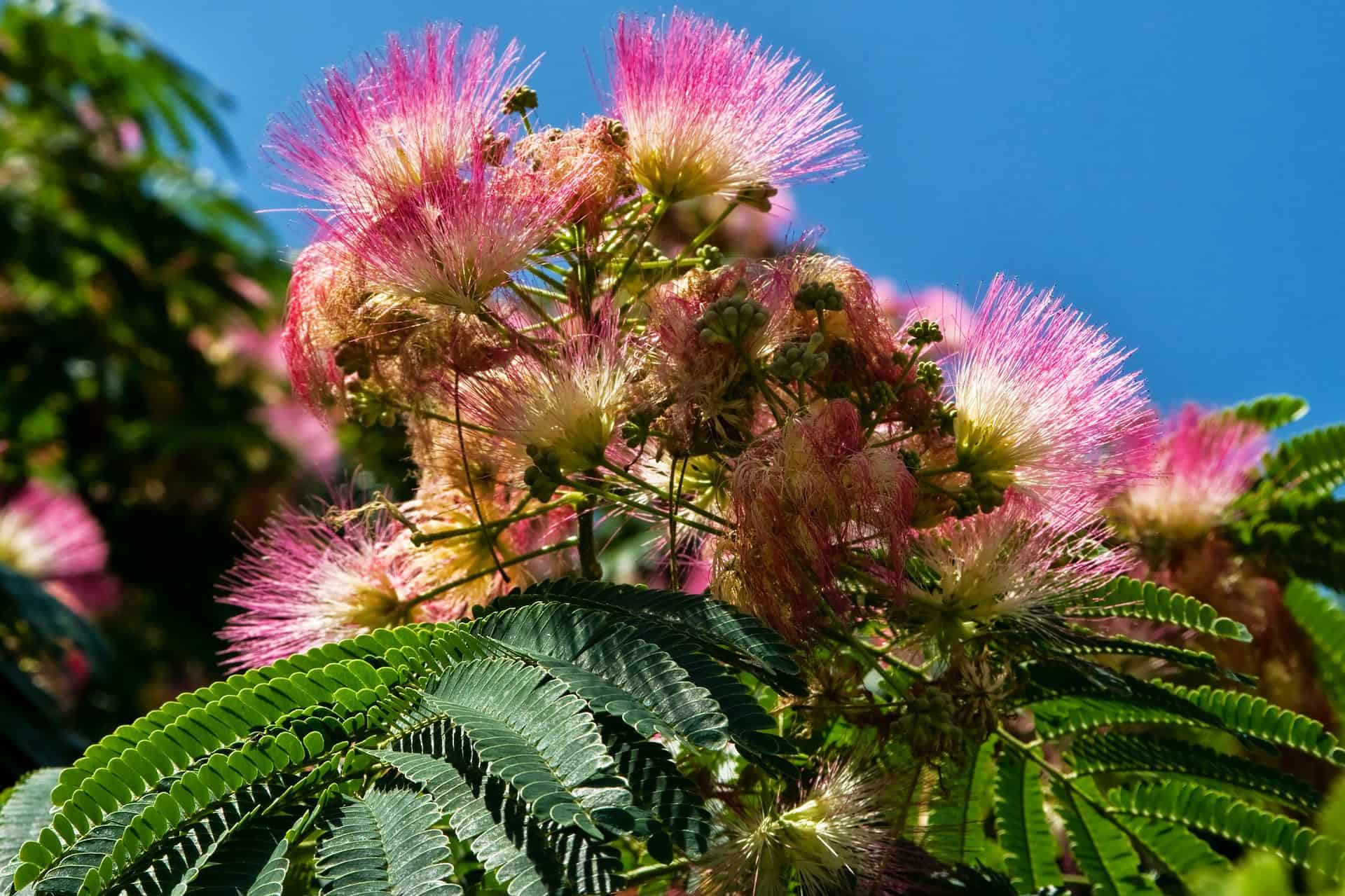
A sunny spot is the best location to plant your Mimosa tree. This tree loves exposure to full sun for the most part of the day (6 or more hours). However, a sunny location isn’t always ideal if you live in a dry region.
If this is the case, plant your silk tree in a partially shaded area. Mimosa trees will do well as long as it receives direct exposure to the sun for about 2 or more hours.
Water
As a drought-tolerant tree species, the Mimosa tree will have no difficulty coping with mild to moderate drought conditions. A young Mimosa tree will require regular watering in the first weeks after it’s planted in the ground. But once it’s established, it’ll need very little care. An inch of water every week is usually enough to keep this tree thriving.
However, if your tree is potted, you’ll have to water more frequently as the soil can easily get parched. Just make sure that the soil has good drainage.
Temperature & Humidity
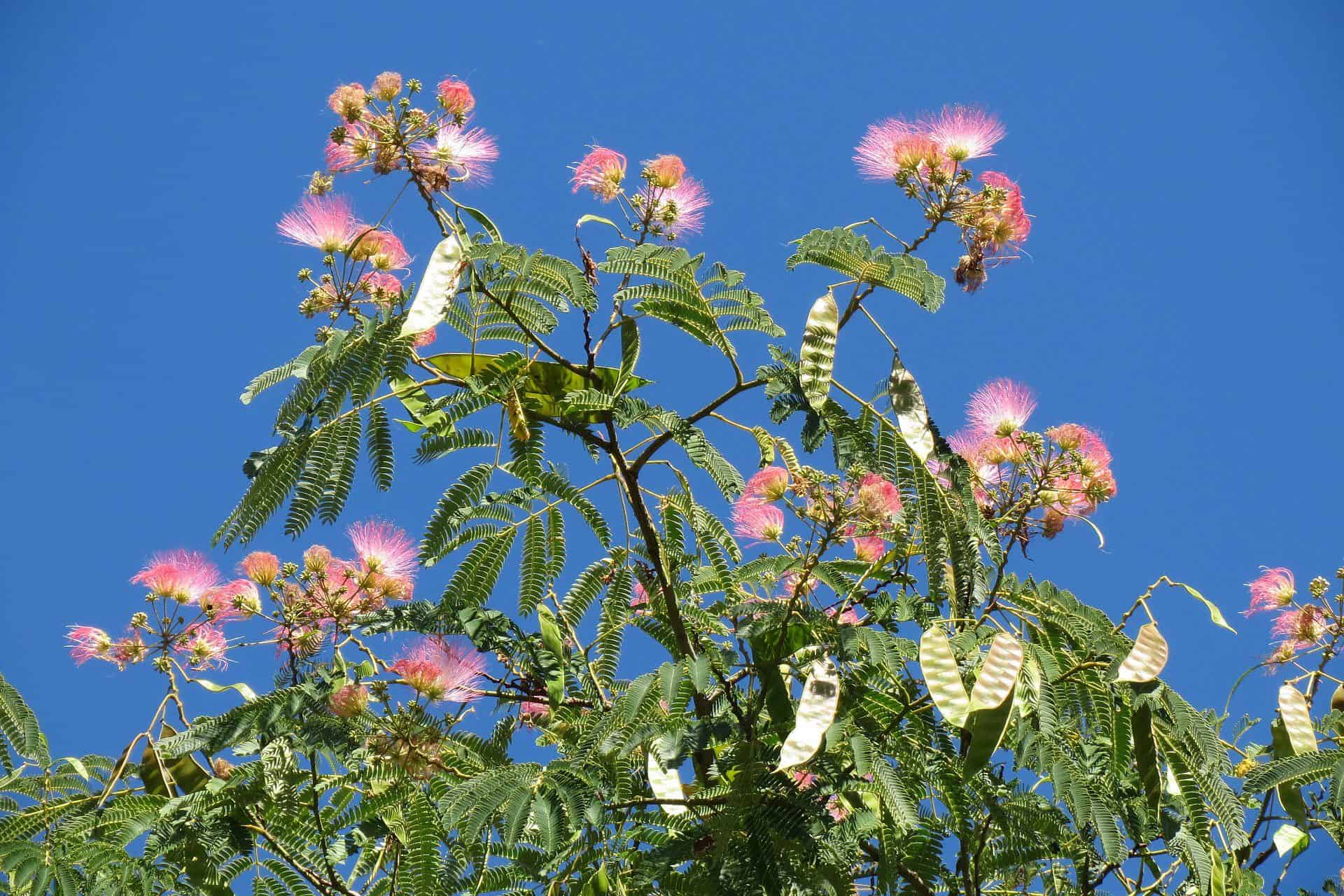
Mimosa trees love tropical and subtropical climates. As such, areas under the USDA plant hardiness zones, 6 to 10 are suitable for growing mimosa. Being a versatile species, it can also tolerate cold temperatures as low as 23°F (-5°C).
However, the occurrence of a sudden and prolonged freeze may result in injury such as yellowing leaves, breaking off branches, and cracking of the trunk.
Fertilizer
Being a legume tree, the Mimosa has the capacity to fix atmospheric nitrogen and release it into the soil. So, it’s wise to opt for a fertilizer that has a low nitrogen quantity. A balanced fertilizer will do, but it would be best to choose a slow-release fertilizer that you can apply just once a year.

Begin fertilizing before the growing season (early Spring) arrives. Doing so will lead to the healthy growth of your silk trees.
Propagation
There are a huge number of mimosa seeds produced by this tree annually. Once the brown seed pods open, the tree disperses the inside, and they’re capable of self-sowing. Even if you don’t intentionally plant the seed, you’ll notice new mimosa trees growing.
Sometimes, they can be hard to control.
Where To Best Plant Your Mimosa Tree
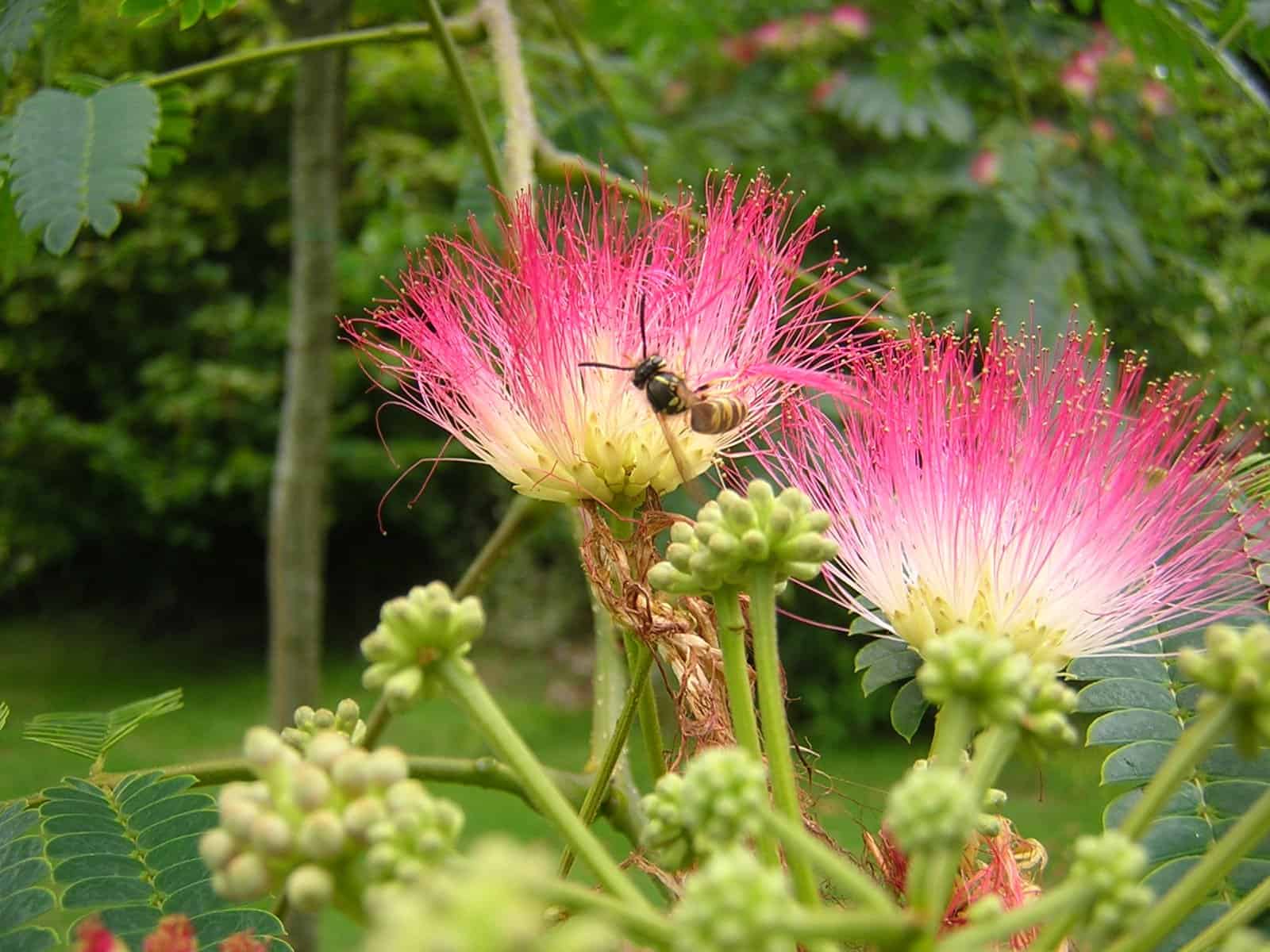
It’s best to plant a Mimosa tree in a location with access to full sun. It could be along roadsides, grasslands, vacant lots, and clearings. If planting near a building or house, keep a distance of at least 10 to 20 feet so the roots won’t damage the structure.
Make sure your place is under the USDA hardiness zones 6 through 10. These zones provide a suitable climate for planting a Persian silk tree.
Mimosa Tree Similar Trees & Varieties
Albizia julibrissin ‘Summer Chocolate’
This variety is also known as the Chocolate mimosa tree. It has an interesting foliage color, turning from green to dark red, then reddish bronze to chocolate brown once summer hits. Such color has a beneficial purpose as it helps the tree be more tolerant of heat and drought conditions.
Albizia julibrissin ‘Ishii weeping’
Ishii weeping is also known as the weeping mimosa. Its branches fall in a downward direction and they almost conceal the trunk.
Mimosa Tree Common Disease & Pests
Mimosa webworm (Homadaula anisocentra Meyrick) is a form of pest that attacks mimosa trees by feeding on the leaves. During the larval stage, the webworms create a web around the leaves where they feed and consume everything. That webbed part becomes skeletonized in return and later dies.
If left untreated, webworms can consume your mimosa tree’s leaves.
One fatal disease that could affect this tree is the Mimosa vascular wilt. It is caused by a fungus that results in wilting and yellowing leaves. Oozing in the trunk may also be present in other trees where the disease is more advanced.
Mimosa vascular wilt disease can lead to the death of the entire tree.
Frequently Asked Questions
After three years and your mimosa tree is established, it will be ready for pruning. You should prune broken or dead branches and other excess growth. If you prune during the winter season when your tree is dormant, it will not produce flowers the next season.
This is a good practice if you want to control the production of seeds. But if you want to see your tree in full bloom, it’s best to prune during mid-Spring.
Excessive occurrence of yellowing leaves in mimosa can be due to pest infestation or disease. You have to carefully inspect the branches and leaves to make sure.
A mimosa tree can live an average length of 30 years. Compared to other tree species, mimosa is short-lived.
Yes. Miracle grow is an all-purpose plant fertilizer and you can use them on your mimosa trees. Just make sure to follow all instructions stated on the label for proper application.
One reason why your mimosa tree isn’t producing flowers is that it’s still in its juvenile stage. The tree must be about 10 feet tall to be mature enough for flowering.
Make sure to visit Plantly to check our trees and bushes collection. We have an extensive list of species you can choose from for your outdoor space.
Whether you want to buy, sell or simply reach out to other plant enthusiasts, Plantly is the right place to be


